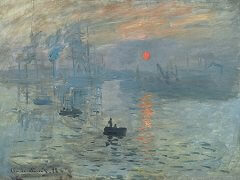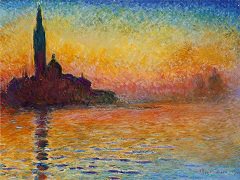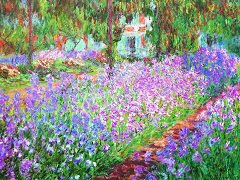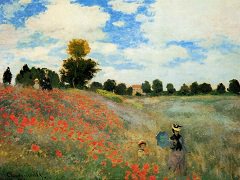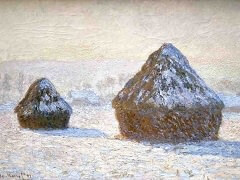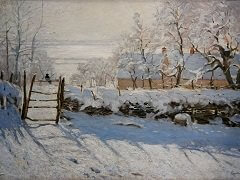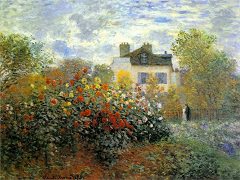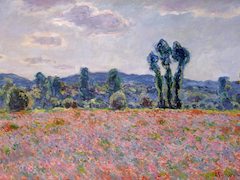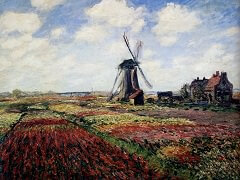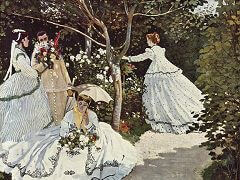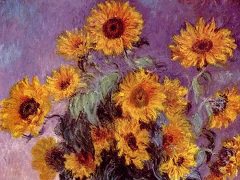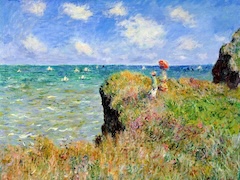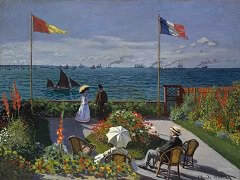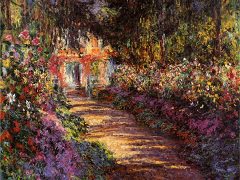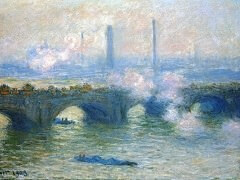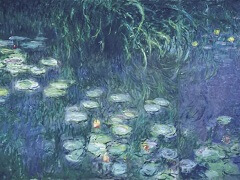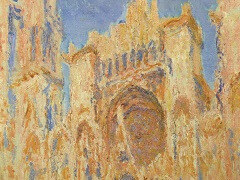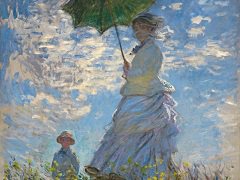Waves Breaking, 1881 by Claude Monet
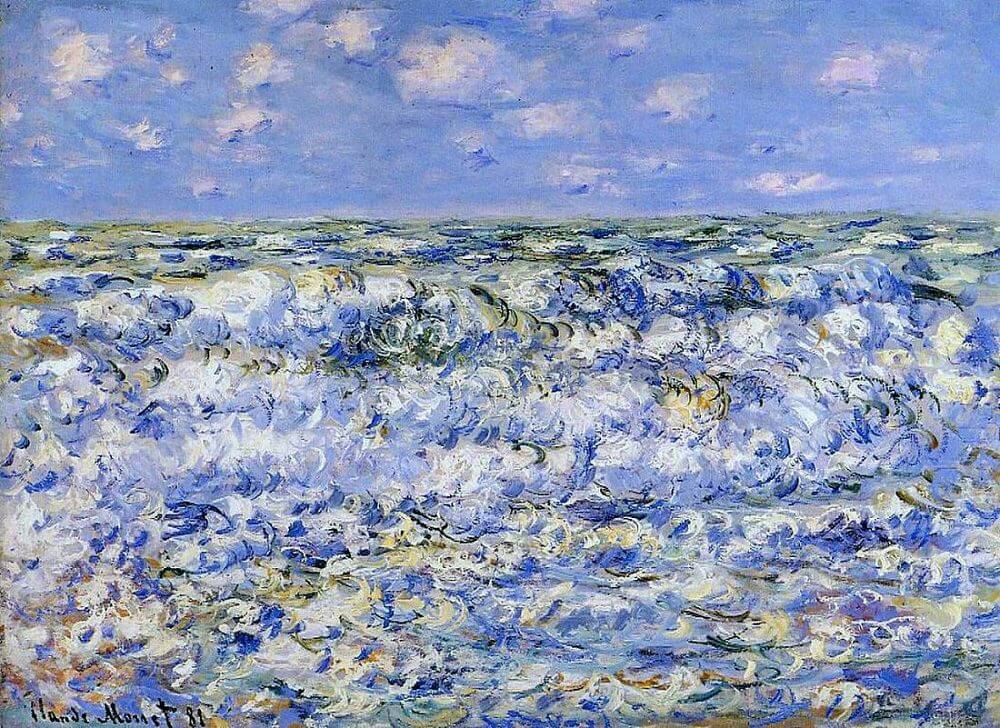
The dramatic compositions of Monet's paintings of the coast - with fragments of cliffs on one edge of the painting silhouetted against the huge expanse of sea, a spike of rock seen through a rock arch, twisted needle rocks thrusting from the sea - are very close to motifs in his favorite Japanese prints Great Wave off Kanagawa by Katsushika Hokusai. They suggest that, rather than transform these motifs into his own compositions as he had done, he wanted his increasingly elite audiences to recognize them as direct variations on Japanese themes.
Romantic and Realist painters had long painted the Norman coast. Manet and Monet's seascapes of the 1860s had been influenced by Japanese prints, as had Millet's paintings of cliffs above the sea of the early 1870s, and perhaps some of Courbet's paintings of motifs on the Channel coast in the late 1860s. In the 1880s Monet chose more abstract modes of embodying the thrust of cliffs and the surge of the sea around weathered rocks. In his Waves breaking 1881 he followed the example of Courbet's marines in which the artist had faced the sea directly and simply divided his painting horizontally into sea and sky - but Monet's painting is radically different. Gustave Courbet emphasized the substance of the sea - its luminosity, its vast recession - while in his paintings of breaking waves, he depicted, the glassy depths of a rearing wave and its break into foam. Monet's painting is rather disconcerting, consisting of row upon row of loose, curved strokes, painted with thick, pasty paint, with only a strip of flatter brushstrokes to give a sense of the horizontal stretch of the sea. Yet, as one looks, one begins to see that these abstract brushstrokes create a sense of the ceaseless movement of the waves and of the way those in the foreground catch a late gleam of cold late afternoon light. The painting is almost perverse in its assertion of the sheer materiality of the medium, yet this is the materiality that can momentarily convince that solidified paint is mobile and fluid.

